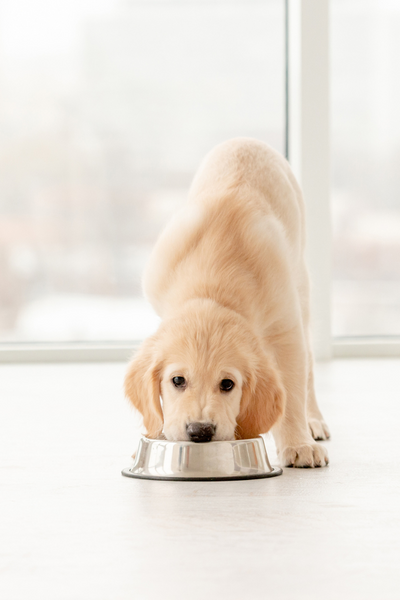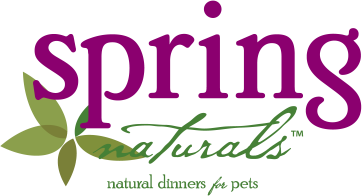
Ingredients in Pet Food You Should Avoid
We all try to buy our pets the best food available, but is what we’re giving them actually what’s best for them? Many ingredients are simply used to increase profit margins, regardless of their nutritional value, or lack thereof. Today, we’re taking a hard look at the ingredients that should be avoided and how commonly used some of them are.
Ingredients to Watch Out For in All Pet Foods
Sometimes, instead of “human grade” ingredients, “feed grade” ingredients are used in pet foods. Feed grade materials are products unsuitable for humans, by law they can only be fed to animals.
These ingredients are basically the waste products of the human food industry. The rendering process is used on many of these ingredients, but despite this they remain dangerous for pet consumption.
These products include:
- Meat from slaughtering and processing plants
- Dead animals from farms, ranches, feedlots, marketing barns, animal shelters, and other facilities
- Fats, grease, and other food waste from restaurants and stores
Indigestible ingredients to avoid:
- Rendered Fat
- Corn and wheat gluten(Gluten-Free products are available)
- Meat and grain meals and by-products
- Food Dyes (Blue 2, Red 40, Yellow 5 and 6, 4-MIE)
- Vitamin K3(Menadione, Menadione Sodium Bisulfite/Bisulphate)
Rendered animal fat is often used to add flavor to kibble, and can be quite dangerous to pets, if the right conditions are met. They can be a source of things like Salmonella, and may contain various toxic materials. In addition, if moisture penetrates a dry food bag, then harmful bacteria and mold can develop, posing great danger to your furry friend.
Byproduct meals are often rendered and used in the creation of kibble, the processed meal is used as a protein substitute to save money. Rendering is the process of cooking animal parts at a high temperature to separate fat, remove water, and kill any bacteria or infectious organisms. Tallow, rendered fat, is a common product of this process. This fat is usually just called animal fat, and anything dried that’s left is called meal, or meat-meal.
Food dyes are also to be avoided, they have no nutritional value, and some pose a danger to our pets. Blue 2, Red 40, and Yellow 5 and 6 have been shown to produce allergic reactions, behavior problems, and cancer in humans. In addition, 4-methylimidazole (4-MIE) can be found in caramel coloring, 4-MIE is known to be poisonous to animals.
Vitamin K3 is a cheap and artificial form of Vitamin K that can cause many serious side effects. It’s against the law to use it in food for human consumption in the US and Europe, so it’s best to avoid it in pet food as well.
Chemicals and Preservatives to Watch out for in Pet Foods
Just like our over-processed human foods, many pet foods contain unsafe chemicals and preservatives that we must avoid when choosing pet foods. While they may have been used at some point in the process and not filtered out correctly, or simply used to save time or money, these can be very dangerous to pets, even in trace amounts.
Chemicals to Avoid:
- BHA (Butylated Hydroxyanisole)
- BHT (Butylated Hydroxytoluene)
- Ethoxyquin
- Pentobarbital
- PG (Propylene Glycol)
Butylated Hydroxytoluene are chemicals added to fats as preservatives. BHA and BHT are known carcinogens capable of causing things as serious as organ failure in pets, and may even cause cancer.
Ethoxyquin is preservative illegal for use in human foods but legal for use in pet foods in the U.S. While Ethoxyquin itself may not be a listed ingredient in pet foods, it’s commonly found in foods that use fish meals in their creation.
Pentobarbital, an anesthetic used in euthanization of animals, can be found in questionably sourced meat products. Be especially careful to avoid unnamed fats and meat meals, and try to purchase foods with clearly sourced meat products to avoid chemicals like Pentobarbital that should never come anywhere near food, for humans or animals.
Propylene Glycol is a moistening agent sometimes used in soft foods and treats. While Propylene Glycol is said to be non-toxic, it’s chemically similar enough to ethylene glycol(which is toxic to animals) that it’s best avoided.
Ingredients in Cat Foods to Avoid
Cats are carnivores, they must have meat to survive, unlike humans or dogs. As a result cats require more protein in their diet than dogs do, and you should make sure to supplement a cat’s diet with additional protein if necessary.
According to the AAFCO, adult cats can survive on 26% protein, while kittens need 30%. However, a mouse, the housecat’s ideal natural food source, is about 55% protein. Adding more protein to a cat’s diet can be beneficial, but like with all things, use moderation care. Consult your veterinarian before making any extreme diet changes.
Cats’ digestive tracts work differently than those of dogs or humans, so you must take care not to give them too many plant-based ingredients. Make sure their protein comes from meat, as it’s what nature intended.
Ingredients in cat food to avoid:
- Alfalfa meal
- Beef Tallow
- Brewers yeast and rice
- Carrageenan/Carrageenan Gum
- Cellulose
- Corn
- Poultry fat
- Rice
- Added salt
- Soy
- Sugar
- Vegetable fats
- Wheat
Cats have little need of carbohydrates, but some can be favorable as an energy source depending on the source.
Ingredients in Dog Food to Avoid
As omnivores, dogs can eat a wider variety of foods, so we must be aware of what’s in the food we give them. Like with other pet foods, many common ingredients in dog food can be dangerous to the animal.
Ingredients in Dog Food to Avoid:
- Carrageenan/Carrageenan Gum
- Cellulose
- Corn
- Corn Syrup
- Farmed Salmon
- Melamine
- MSG
- Nitrates/Nitrites
- Added salt
- Sodium Hexametaphosphate
- White Flour
- White Rice
Things to Look for in Nutritional Pet Foods
There’s many things to avoid in pet food, just like with our own nutrition, but there’s also many good things to watch for. If possible, only purchase food without preservatives, or that use natural ones, like vitamin C and E.
Look for named fats, like chicken fat or sunflower oil. Knowing where the fat comes from is important, as tallow and other questionable fats are commonly used. Foods that include safe fiber like rice bran are good to look out for, as they help to promote healthy digestion.
In general, take care to purchase foods sourced from the U.S. or from a brand that is transparent about where their ingredients come from. Brands that do go the extra mile to make their food healthy like to tell others about it, so a bit of research can go a long way in choosing the right food for your companion.

Post a Comment!